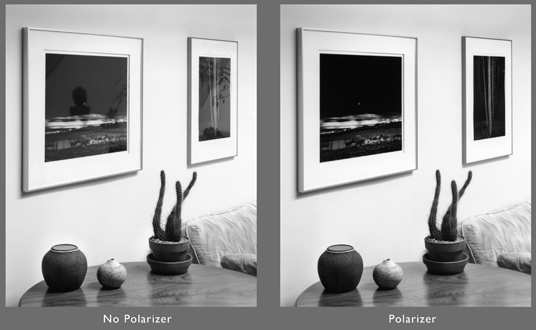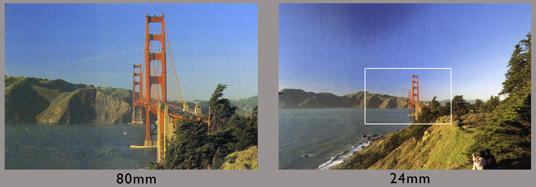A polarizing filter is one of the few filters that are equally effective with color imaging and with black-and-white. It can:
• Minimize or eliminate reflections in glass, water or most any surface except metal.
• Darken skies in color photos as well as in black-and-white
• Cut through haze
• Increase the saturation of colors
There Are Two Types Of Polarizing Filters
There are two basic types of polarizing filters. They essentially accomplish the same thing, but…
- The original “linear” polarizer pose problems with most modern through-the-lens metering systems
- The comparatively new “circular” polarizers were developed to minimize or eliminate metering issues.
Polarizing Filter Factors
Most filter manufacturers list polarizers as having a variable filter factor, usually 2 to 4 depending on the effect of the polarization. I personally just use a factor of 2.5 (1.3 stop correction) because any further darkening, say, of a sky is an effect I want, and do not want to override.
When To Use A Polarizing Filter
The great thing about using a polarizing filter is that you can actually see the effect before taking the picture. When held up to the eye or placed on a lens and rotated in a clockwise or counter-clockwise direction, you can see gradual lightening or darkening as you rotate. You can pick just the degree of effect you want. At its lightest orientation, it is essentially just a 1.3-stop neutral density filter. If you are using a non-through-the-lens camera (rangefinder, Holga, etc) you will need to hold the polarizing filter up to your eye and note what part of the filter is at “12 o’clock” for the effect you want, then put the filter on your lens in the same orientation.
Above, a polarizer effectively eliminating reflections in glass. Note that the reflections in the polished table are only moderately affected – that light was polarized in a different direction. Below, note how the polarizer has darkened the sky, increased saturation in the colors and reduced haze.
How To Use A Polarizing Filter With A Wide Angle Lens
A polarizing filter works by darkening light in the subject that is already polarized. If there is no polarized light, the filter has no effect other than neutral density. The light in a sky is not evenly polarized, so if you are using a wide-angle lens you will capture part of the sky that may be highly polarized AND also include part of a sky that is less polarized. If you are using a wide-angle lens on a subject that does not include sky, you may not notice any odd effect.
In the end, no well equipped camera case should be without the versatile polarizing filter!
__________________________________________________________________________
Announcing
Alan Ross’ Live Virtual Photography Coaching
For People Who Are Passionate About Photography
“Over the years hundreds of people from all over the world have asked me for personal help.
There was just no way I could do it…until now. Today, I’m thrilled to be able to coach
budding photographers from my own studio using the internet!” – Alan
Do you love taking photographs?
Do you dream of becoming a better photographer?
Do you have questions about exposure, visualization, Photoshop, Lightroom
or all of it?
If your answer is YES, then you’re ready for a totally new way
to learn how to express your photographic vision in a private virtual session
with me at a really great price (shhh…don’t tell my CPA)!
Get details, see student testimonials, and find out how to sign up: here
__________________________________________________________________________
Upcoming photo expeditions and workshops:
- Crafting the Fine Silver Print – Dallas, Texas (February 2018)
- Exploring Croatia: A Classic & Contemporary Phot0 Adventure on Eastern Europe’s Stunning Dalmation Coast (May 2018)
- In the Style of Ansel Adams: Crafting the Fine Silver Image – Yosemite (October 2018)
- Expressive Photography – Carmel, Calif. (October 2018)
Check out all my upcoming photo expeditions and workshops here



Felipe